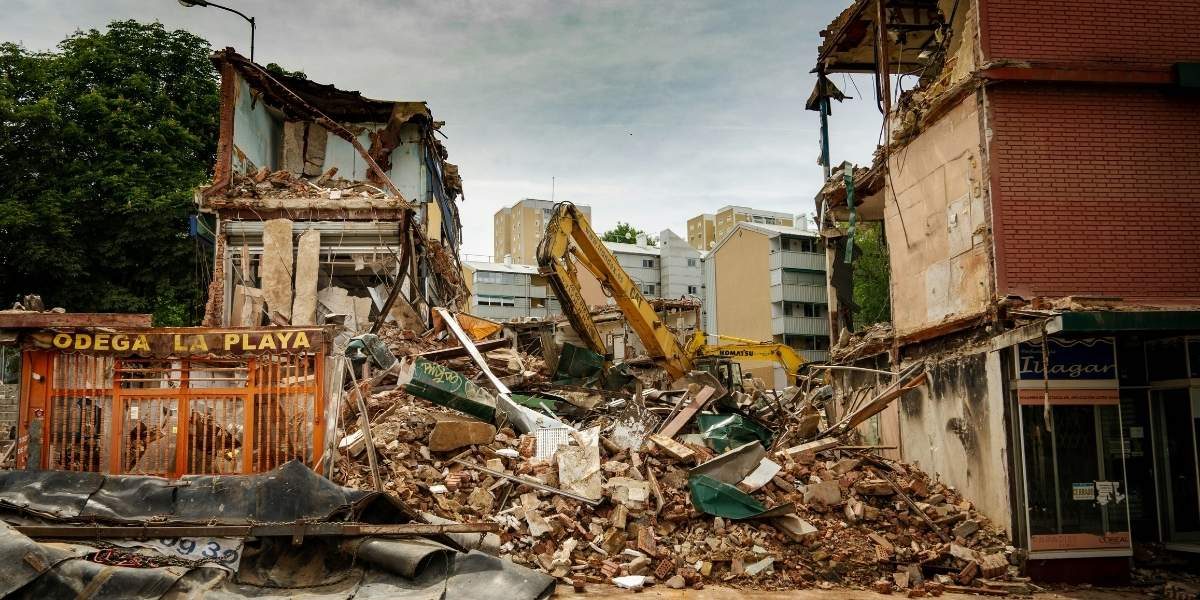Understanding Earth’s Tremors: The Science and Impact of Earthquakes
Earthquakes are one of the most powerful and unpredictable natural forces that can cause widespread devastation in an instant. These tremors are the result of tectonic processes that have shaped the planet for millions of years. From minor shakes to massive quakes, earthquakes can disrupt lives, damage infrastructure, and change landscapes. Understanding the science behind earthquakes and their impact on society is crucial for preparedness and risk reduction. In this article, we will explore how earthquakes occur, their effects on the Earth, and how we can better prepare for their inevitable occurrence.
Read Also: The Global Decline in Fertility Rates and Its Economic Impact
What Causes Earthquakes?
Earthquakes are caused by the sudden release of energy within the Earth’s crust, which creates seismic waves that travel through the ground. The primary cause of earthquakes is the movement of the tectonic plates, the large sections of the Earth’s crust that float on the semi-fluid mantle beneath them. These plates are constantly shifting, and when they move along fault lines—cracks in the Earth’s surface—the stress that builds up is released as energy, resulting in an earthquake.
There are several types of tectonic plate movements that can cause earthquakes:
-
Convergent boundaries: When two plates collide, one may be forced beneath the other, creating powerful earthquakes, especially in regions like the Himalayas or along the Pacific Ring of Fire.
-
Divergent boundaries: When two plates move apart, as in the Mid-Atlantic Ridge, the resulting rift can cause earthquakes.
-
Transform boundaries: When two plates slide past one another, as seen along the San Andreas Fault, friction can cause earthquakes.
In addition to tectonic movements, earthquakes can also be triggered by human activities, such as mining, reservoir-induced seismicity from large dams, and even the injection of fluids into the Earth’s crust during hydraulic fracturing (fracking).
How Are Earthquakes Measured?
Earthquakes are measured using two key scales: the Richter scale and the Moment Magnitude scale (Mw). The Richter scale was developed in 1935 and measures the amplitude of seismic waves, providing a numerical value to the size of an earthquake. However, the Moment Magnitude scale is currently the most widely used and accurate method for measuring the energy released during an earthquake, especially for large earthquakes.
The Moment Magnitude scale assigns a number to an earthquake based on the amount of fault slip, the area of the fault that has ruptured, and the material properties of the rocks involved. The higher the number, the larger the earthquake:
-
Minor earthquakes: Magnitude 3.0 to 3.9
-
Light earthquakes: Magnitude 4.0 to 4.9
-
Moderate earthquakes: Magnitude 5.0 to 5.9
-
Strong earthquakes: Magnitude 6.0 to 6.9
-
Major earthquakes: Magnitude 7.0 and above
The Mercalli Intensity scale is also used to measure the effects of an earthquake, assessing the damage and human perception of the tremor rather than the energy released.
The Impact of Earthquakes on the Earth
Earthquakes can have profound effects on the Earth’s surface and environment. These seismic events can cause ground shaking, landslides, and tsunamis. The impact of an earthquake often depends on the magnitude, depth, and location of the quake.
-
Ground shaking is the most immediate and obvious impact of an earthquake. It can cause buildings, bridges, and infrastructure to collapse, leading to injuries and fatalities. In densely populated urban areas, even a moderate earthquake can cause significant damage.
-
Surface rupture occurs when the fault line breaks the surface of the Earth, creating fissures that can damage roads, pipelines, and buildings.
-
Landslides triggered by seismic activity can result in the destruction of homes and infrastructure, particularly in hilly or mountainous areas. Landslides can also block rivers, creating potential flooding hazards.
-
Tsunamis are massive ocean waves generated by undersea earthquakes, especially those occurring near oceanic tectonic plate boundaries. These waves can travel great distances and cause catastrophic flooding when they reach coastal regions.
Research indicates that the effects of earthquakes are not just physical but can have long-lasting impacts on the local economy, healthcare systems, and community well-being. Rebuilding after an earthquake can take years, especially in heavily impacted areas.
The Social and Economic Impact of Earthquakes
The social and economic consequences of earthquakes can be devastating, particularly in regions where infrastructure is poorly designed or the population is vulnerable. Earthquakes can lead to:
-
Loss of life: Earthquakes, especially large ones, can cause significant loss of life. Collapsing buildings, fires, and tsunamis often contribute to high fatality rates in affected areas.
-
Displacement: People may be forced to flee their homes, leading to temporary or long-term displacement. This can strain resources in neighboring regions and disrupt local economies.
-
Economic disruption: Earthquakes can cause widespread damage to infrastructure, including roads, bridges, and communication systems, making it difficult for businesses to operate. The cost of recovery and rebuilding can be astronomical, particularly for developing countries.
-
Public health crises: The destruction of medical facilities and the interruption of healthcare services can exacerbate the public health crisis following a major earthquake. In addition, the spread of diseases due to inadequate sanitation and lack of clean water can compound the challenges.
The 2010 Haiti earthquake is one of the most devastating examples, where more than 160,000 people were killed, and the country faced massive infrastructure collapse and displacement. Efforts to rebuild and recover have been ongoing for years.
How Can We Prepare for Earthquakes?
Earthquake preparedness is crucial for minimizing the impact of tremors. In earthquake-prone regions, both individual and governmental preparedness measures are key. Here are some of the most effective steps for preparedness:
-
Earthquake-resistant construction: Buildings and infrastructure should be designed to withstand seismic activity, using flexible materials and structural reinforcements that allow them to absorb the energy from earthquakes.
-
Emergency kits: People in earthquake-prone areas should have emergency kits stocked with food, water, medical supplies, flashlights, and other essentials to sustain them in the aftermath of an earthquake.
-
Public education: Communities should be educated about earthquake safety, including the “Drop, Cover, and Hold On” drill during shaking, evacuation routes, and where to find shelter.
-
Early warning systems: Countries in seismic zones have implemented earthquake early warning systems, which can detect the initial seismic waves (P-waves) and provide seconds to minutes of warning before the more damaging shock waves (S-waves) arrive. This short warning time can save lives by allowing people to take cover or evacuate vulnerable areas.
The Future of Earthquake Monitoring and Risk Mitigation
Advancements in earthquake monitoring and prediction technologies are rapidly improving, helping to mitigate the effects of future seismic events. Seismic sensors are now installed in many areas to provide real-time data on ground movement. In addition, satellite technology is being used to monitor surface deformation and track seismic activity remotely, allowing for more accurate predictions.
The future of earthquake risk mitigation lies in building resilience—not just by strengthening infrastructure, but by creating communities that are better prepared and equipped to handle the aftermath of an earthquake.
International collaboration, continued research, and the development of advanced technology will be key in improving earthquake forecasting and reducing the impact of these natural disasters.
Read Also: The Enduring Power of Mythology in Today’s World
Living with Earth’s Tremors
Earthquakes are powerful, unpredictable natural phenomena that have shaped the Earth’s landscape and human history. Understanding how they occur, their potential impacts, and how we can prepare for them is essential for reducing their effects on communities and economies. While we may never fully control the forces that cause earthquakes, ongoing advancements in science, technology, and preparedness are allowing us to mitigate their consequences and build a more resilient world in the face of seismic activity.








